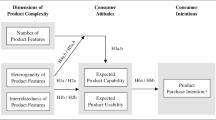Abstract
Wheeled luggage has become a necessity for travel, and there is a wide range of products on the market. Many of these products are of a high quality, both functionally and aesthetically, but nevertheless, these products can suffer damage during use. For example, wheels or handles can fall off or the luggage body can be deformed or destroyed. Therefore, in this study, we evaluate selection method for appropriate materials to prevent damage to the luggage body, even under harsh usage conditions. The material selection method is a combination of two methods. One is an engineering-based material selection method using tangible material properties, and the other is a product personality-based material selection method using intangible material properties. First, the design requirements are described in terms of function, constraints, personality, and objectives. Subsequently, materials are selected from each of these perspectives. Function represents the product function, and constraints are the essential conditions that the product must have. Materials that satisfy these conditions are, thus, selected. Then, the material class is determined by the product personality, which is based on the consumers' perception of materials. Finally, the selected materials are ranked using the objectives, and the final material is selected by comparing the supporting information between the materials in the upper ranking.
Graphical Abstract




Similar content being viewed by others
References
M. Ashby, K. Johnson, Materials and Design: The Art and Science of Material Selection in Product Design (Butterworth-Heinemann, Oxford, 2002)
M. Ashby, K. Johnson, Mater. Today 6, 24 (2003)
E. Karana, P. Hekkert, P. Kandachar, Mater. Design 31, 2932 (2010)
E. Karana, B. Barati, V. Rognoli, A.Z. van der Laan, Int. J. Des. 9, 35 (2015)
L. Veelaert, E. Du Bois, I. Moons, E. Karana, Mater. Design 190, 108543 (2020)
L. Veelaert, Express your material self: experiential material characterization in product design, Ph.D. thesis, University of Antwerp, Antwerpen (2022)
M.F. Ashby, Y.J.M. Bréchet, D. Cebon, L. Salvo, Mater. Design 25, 51 (2004)
M. Ashby, Materials Selection in Mechanical Design, 3rd edn. (Elsevier, Oxford, 2005)
J. Choi, Int. J. Interact. Des. Manuf. 11, 967 (2017)
J. Choi, Met. Mater. Int. 27, 1599 (2021)
J. Choi, Korean J. Met. Mater. 60, 76 (2022)
Korea Consumer Agency, Luggage (in-flight) quality test result report (2018)
Ansys Granta, https://www.ansys.com/products/materials (2021)
R Core Team, R: A Language and Environment for Statistical Computing (R Foundation for Statistical Computing, Vienna, 2022). https://www.R-project.org
C.E. Osgood, G.J. Suci, P.H. Tannenbaum, The Measurement of Meaning (University of Illinois Press, Urbana, 1957)
R. Boyer, G. Welsch, E.W. Collings (eds.), Materials Properties Handbook: Titanium Alloys (ASM International, Materials Park, 1994)
S.A. Jung, H. Kwon, K.M. Roh, C.Y. Suh, W. Kim, Met. Mater. Int. 21, 923 (2015)
W. Zhao, W. Su, L. Lee, D. Fang, N. Chen, Met. Mater. Int. 27, 3214 (2021)
Acknowledgements
This study was supported by 2022 Academic Research Support Program in Gangneung-Wonju National University (No. 2022100158).
Author information
Authors and Affiliations
Corresponding author
Ethics declarations
Conflict of interest
The author declares that he has no conflict of interest.
Additional information
Publisher's Note
Springer Nature remains neutral with regard to jurisdictional claims in published maps and institutional affiliations.
Rights and permissions
Springer Nature or its licensor (e.g. a society or other partner) holds exclusive rights to this article under a publishing agreement with the author(s) or other rightsholder(s); author self-archiving of the accepted manuscript version of this article is solely governed by the terms of such publishing agreement and applicable law.
About this article
Cite this article
Choi, J. Material Selection Method Using Tangible and Intangible Material Properties: A Case Study of Travel Luggage. Met. Mater. Int. 29, 1961–1967 (2023). https://doi.org/10.1007/s12540-022-01358-7
Received:
Accepted:
Published:
Issue Date:
DOI: https://doi.org/10.1007/s12540-022-01358-7




